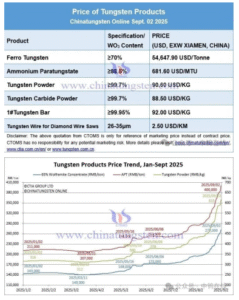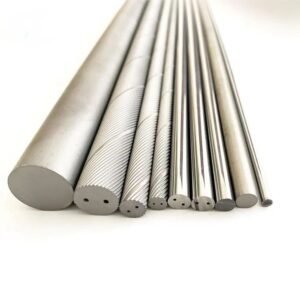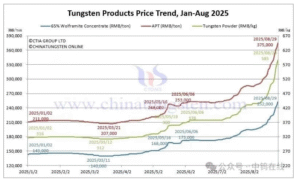Introduction
Selecting the right hard alloy insert for a specific machining task can significantly impact the quality, efficiency, and cost-effectiveness of the manufacturing process. With the vast variety of hard alloy inserts available in the market, it is crucial to understand the material properties, geometry, and coatings that best suit your machining needs. This article provides a comprehensive guide on how to choose the appropriate hard alloy insert, focusing on material considerations, cutting conditions, and performance requirements.
Understanding the Basics of Hard Alloy Inserts
Hard alloy inserts, commonly made from tungsten carbide (WC), are widely used for machining various materials in industries such as automotive, aerospace, and metalworking. These inserts are known for their high hardness, wear resistance, and ability to withstand high temperatures, making them suitable for demanding machining operations.
The selection process of the right insert depends on several key factors:
- Material Type: Different alloys are suited for machining specific materials. Some carbide inserts are designed for high-speed machining of ferrous materials, while others are better suited for non-ferrous metals or high-temperature alloys.
- Cutting Conditions: Factors such as cutting speed, feed rate, and depth of cut significantly influence the choice of insert.
- Tool Geometry: The insert's shape and geometry can affect its cutting efficiency and surface finish.
- Coatings: Coatings such as TiN, TiAlN, or CVD coatings can extend the life of the insert and improve its cutting performance.
Key Factors to Consider When Choosing a Hard Alloy Insert
- Material of the Workpiece The material being machined plays a crucial role in selecting the appropriate hard alloy insert. Some common materials include:
- Steel: Carbide inserts with high hardness and wear resistance are ideal for machining steel. Inserts designed for steel typically have a balanced toughness to prevent chipping.
- Stainless Steel: For stainless steel, inserts with coatings like TiN or TiAlN are commonly used to reduce friction and heat buildup.
- Cast Iron: Inserts with high toughness and wear resistance are preferred for cast iron, as it is abrasive and can cause excessive wear on tools.
- Non-Ferrous Metals: For non-ferrous metals such as aluminum, copper, and brass, inserts with lower cutting forces are generally selected to avoid material deformation.
- Cutting Speed and Feed Rate The cutting speed and feed rate determine the heat generated during machining, which in turn affects the choice of carbide insert. High cutting speeds often result in more heat generation, which can lead to tool wear. To mitigate this, carbide inserts with higher heat resistance, such as those coated with TiAlN, are selected for high-speed operations. For slower cutting speeds, inserts with a greater level of toughness may be preferred.
- Insert Geometry The geometry of the insert refers to its shape, size, and cutting edge angles. Some key considerations include:
- Rake Angle: Inserts with a positive rake angle reduce cutting forces and are often used in light, finish machining applications. Negative rake angles, on the other hand, are suitable for heavy, rough machining where durability is essential.
- Insert Shape: Common shapes include square, triangle, and round. The choice of shape depends on the specific machining task. For example, square inserts are often used for general turning operations, while triangular inserts are suited for rough cutting due to their durability.
- Corner Radius: Inserts with a larger corner radius are suitable for heavier cuts, while those with a smaller radius provide better surface finishes for finishing cuts.
- Coatings and Surface Treatment Coatings enhance the properties of carbide inserts by providing additional protection against wear, heat, and chemical reactions. Some of the most common coatings include:
- TiN (Titanium Nitride): This coating provides a hard surface that reduces friction and extends the tool's lifespan, making it ideal for general-purpose machining of steel and other ferrous materials.
- TiAlN (Titanium Aluminum Nitride): TiAlN coatings are particularly effective in high-speed machining and high-temperature environments, making them ideal for machining stainless steel, titanium alloys, and other heat-resistant materials.
- CVD (Chemical Vapor Deposition) Coatings: These coatings offer superior wear resistance and thermal stability, making them ideal for cutting hard materials like cast iron or heat-resistant alloys.
- PVD (Physical Vapor Deposition) Coatings: PVD coatings enhance the toughness and hardness of carbide inserts, providing better resistance to wear and extending the tool's lifespan.
- Tool Life and Cost Considerations The overall tool life and cost-effectiveness of a hard alloy insert are crucial factors in the selection process. Although high-performance carbide inserts may come at a higher initial cost, they often provide longer tool life, reduced downtime, and lower replacement costs in the long run. When selecting an insert, it is important to weigh the cost against the benefits of increased productivity, longer tool life, and improved surface finish.
Common Types of Hard Alloy Inserts and Their Applications
- Turning Inserts Turning inserts are used for shaping cylindrical workpieces on a lathe machine. They are commonly available in a variety of shapes, such as square, round, and triangular. These inserts are typically used for turning operations on materials such as steel, cast iron, and stainless steel.
- Milling Inserts Milling inserts are designed for milling operations, where material is removed using a rotating cutter. These inserts are available in different shapes and sizes, depending on the milling machine and the type of operation (e.g., face milling or end milling). Carbide milling inserts are suitable for hard materials and high-speed operations.
- Drilling Inserts Drilling inserts are used in drilling operations to create holes in the workpiece. These inserts are typically made from high-performance carbide materials and are designed to withstand the high heat and pressure generated during drilling.
- Grooving and Profiling Inserts Grooving inserts are used to create grooves or channels in the workpiece, while profiling inserts are used for shaping specific profiles. These inserts are essential in industries such as automotive and aerospace, where precise, intricate cuts are required.





